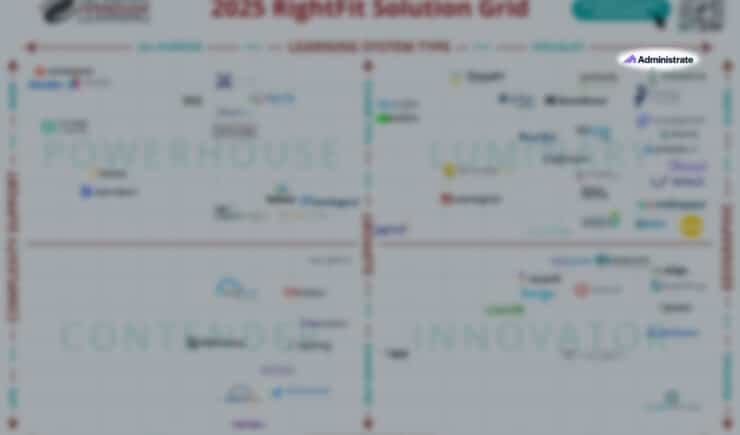Training data can be the key that unlocks the full potential of your training operations – if you can trust it. Analysis and interrogation of your data is a key step towards being able to continuously improve your operations and deliver training at scale.
But that hinges on an often uncomfortable question: Is your training data reliable?
Unfortunately for many Training teams, the answer is often either “I don’t know” or “I know our data can be unreliable”. That’s not the fault of learning and development professionals. It’s because most of the software solutions available just aren’t built with data-driven operations in mind.
Storing data on disconnected systems leads to duplicated entries. Manual data transfers between systems introduce unnecessary human error. And once an error occurs, it can be difficult to determine what systems are affected in a disconnected tech stack.
Training data desperately needs modern data management practices to make it reliable and useful. Let’s take a look at two principles that can make that management easier – the DRY principle and a Single Source of Truth.
The DRY Principle
Don’t Repeat Yourself is a key mantra that has been guiding software design since 1999. Creating or hosting something once, and referring back to it, is better than creating and hosting it over and over.
The DRY principle makes error identification and correction easier. If a dataset has an incorrect entry, it only needs to be fixed in one place. If a process experiences an error, it only needs to be corrected once.
Practicing the DRY principle means fewer places where errors can occur, and makes identifying and fixing those errors simpler. A DRY training software infrastructure would mean fewer errors and a higher reliability for training data – but what would it actually look like?
Managing training operations data in a DRY way will require creating a software infrastructure that centralizes control of your data. What you need is a training management system that’s capable of acting as a Single Source of Truth.
What is a Single Source of Truth?
A Single Source of Truth is an ideal software infrastructure where every data point is stored only a single time, within a single system. When other systems need that data, instead of using their own local copies, they send a request to a central data repository. That repository then responds with the data that’s needed.
This ensures that there are no messy manual transfers, and prevents duplication by maintaining only a single copy. A Single Source of Truth is a practical implementation of the DRY principle. That means that when errors do arise, they only need to be corrected in a single place. The fix will automatically propagate throughout your tech stack.
A Single Source of Truth shouldn’t be confused with the related concept of a Source System of Record. A Source System of Record is a software infrastructure where one system contains a master list of data. That list is defined as being correct if there is a conflict. However, other systems still have their own local copies.
A well-maintained Source System of Record can provide greater reliability. But it doesn’t prevent errors from arising in the first place the way that a Single Source of Truth can.
So, what does a Single Source of Truth look like for a Training team?
How a Training Management System Can be a Single Source of Truth
Establishing a Single Source of Truth requires a software platform that’s built for the developer experience, integration, and connectivity. It needs to be able to link the disparate, disconnected training software that dominates today’s market if it’s going to give you full transparency and visibility. Administrate’s training management system does exactly that.
You can configure Administrate as the centerpiece of a unified, fully-integrated data architecture. With the right setup, Administrate can automatically receive, store, and deliver all of your training data into and out of a single, secure repository. No more manually shifting data between systems using spreadsheets, fighting formatting and human error all the way. Administrate can streamline and centralize your data management.
Imagine, for example, connecting your LMS and learner CRM through Administrate. By automatically sharing data between those systems, you could keep track of all kinds of data about each of your learners. Grades, payment methods, support tickets, course enrollments – all in one place, easy to compare and analyze for insights into your learner’s experience. You could easily, for example, compare how your customer training stacks up against your internal training, and find optimizations in both areas – all within Administrate’s easy no-code reporting engine.
And that’s just what’s possible by linking two programs through Administrate. Now consider how much valuable data you have in your other learning tech, just waiting to be integrated and analyzed.
Now, can you conduct that kind of analysis the old-fashioned way? Sure. But it takes time, effort, and risk to make those deep connections through spreadsheets and pivot tables. Time and effort to manually pull the data, tinker with the formatting, and isolate meaningful results. Risk, because manually manipulating datasets increases the chance of introducing human error to the equation.
And while Administrate’s reporting engine lets you easily change parameters and conduct a new analysis in moments, spreadsheets aren’t that flexible. If you want to investigate some new connection, it’s back to square one – pulling data, fixing formatting, spending precious time doing data entry and not strategic analysis. A spreadsheet just can’t compare to the ease-of-use that a training management platform configured to be a Single Source of Truth can provide.
If your team struggles to maintain accurate and reliable training data, you’re not alone. To see how you compare with hundreds of other Training teams, consider taking our brief Scalability Index Assessment. It’ll provide you with personalized information and recommendations on the blockers that might be stopping your team from scaling effectively.





